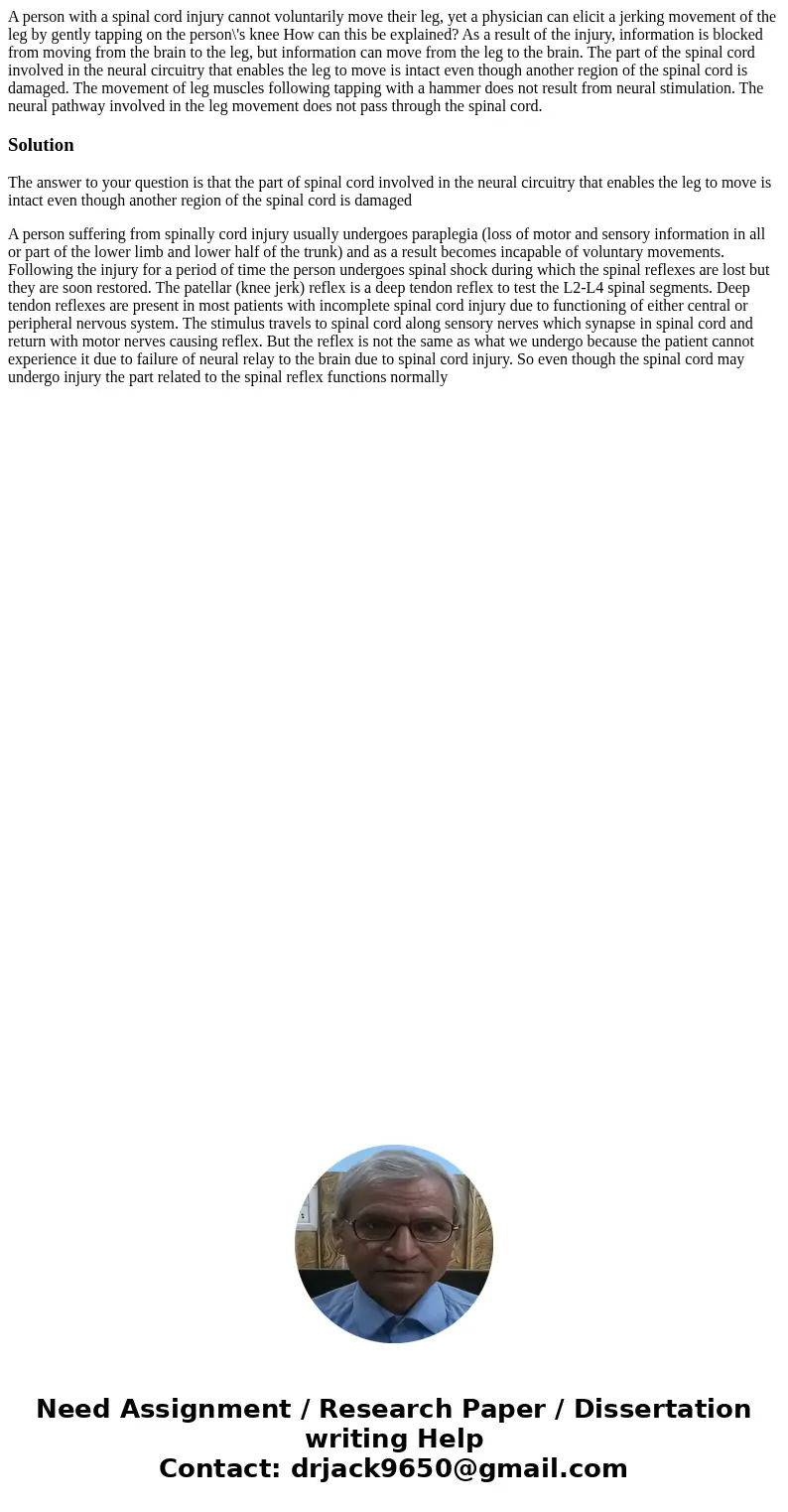A person with a spinal cord injury cannot voluntarily move t
Solution
The answer to your question is that the part of spinal cord involved in the neural circuitry that enables the leg to move is intact even though another region of the spinal cord is damaged
A person suffering from spinally cord injury usually undergoes paraplegia (loss of motor and sensory information in all or part of the lower limb and lower half of the trunk) and as a result becomes incapable of voluntary movements. Following the injury for a period of time the person undergoes spinal shock during which the spinal reflexes are lost but they are soon restored. The patellar (knee jerk) reflex is a deep tendon reflex to test the L2-L4 spinal segments. Deep tendon reflexes are present in most patients with incomplete spinal cord injury due to functioning of either central or peripheral nervous system. The stimulus travels to spinal cord along sensory nerves which synapse in spinal cord and return with motor nerves causing reflex. But the reflex is not the same as what we undergo because the patient cannot experience it due to failure of neural relay to the brain due to spinal cord injury. So even though the spinal cord may undergo injury the part related to the spinal reflex functions normally

 Homework Sourse
Homework Sourse